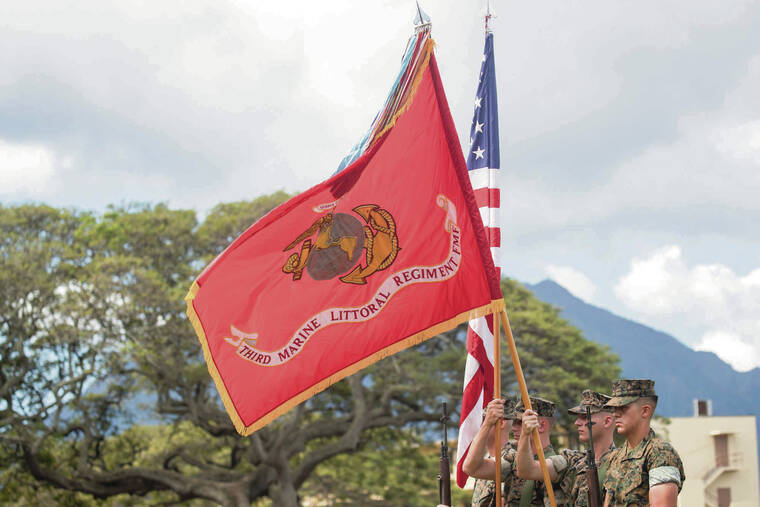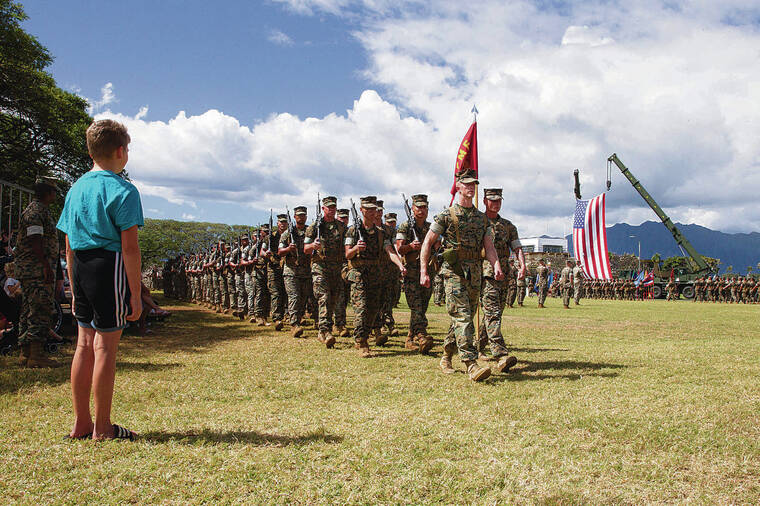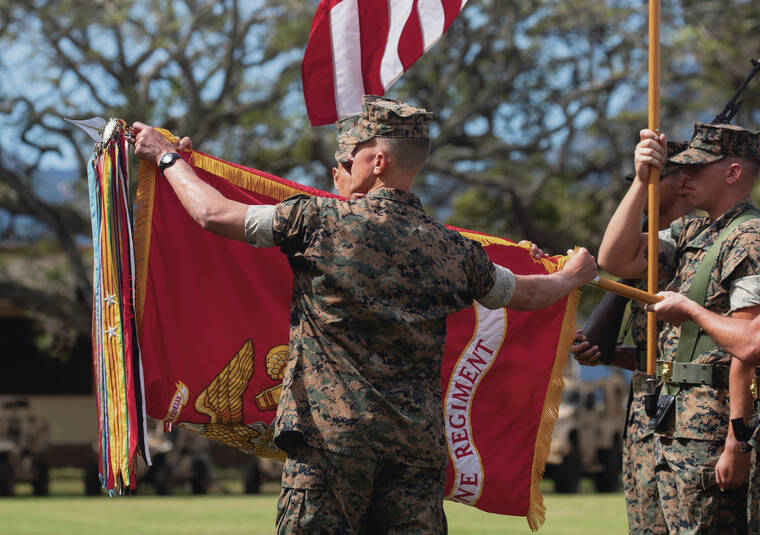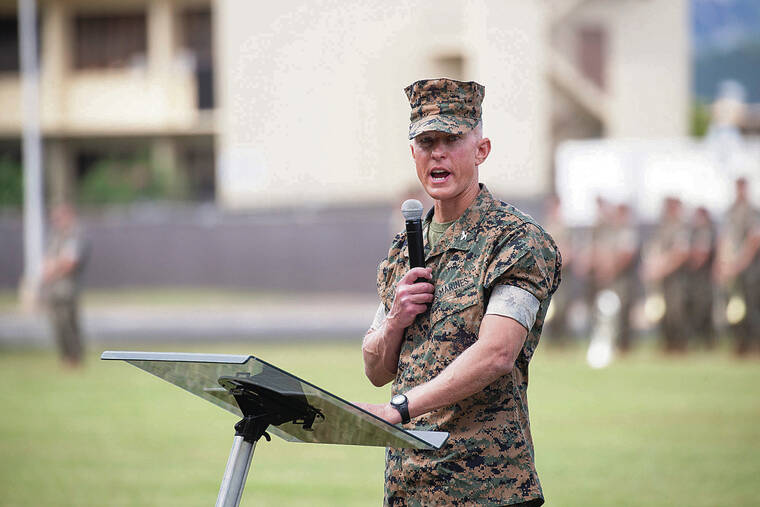The Marine Corps has officially activated its first Marine Littoral Regiment as part of an ambitious restructuring of the service that’s starting in Hawaii.
At a ceremony Thursday at Marine Corps Base Hawaii, the storied 3rd Marine Regiment officially became the 3rd Marine Littoral Regiment as part of the service’s Force Design 2030 initiative, with Marines retiring the battle standard of their old unit.
The new unit is set to be the blueprint for what Marine fighting units will look like in the future, with the emphasis on operations in island and coastal regions, particularly in the Pacific.
“Force Design is bringing in many changes to our formations,” the regiment’s commander, Timothy Brady, said in remarks during the ceremony. “We have to modernize and adapt to be successful in the operating environment of the future where adversary technologies and capabilities will certainly continue to advance. But there are some things that will not change.”
The 3rd Marine Regiment, which officially deactivated in February, has a storied history.
Originally formed in 1911, the unit fought in the “Banana Wars” in Central America and the Caribbean and the Pacific campaigns of World War II, deployed to Tsingtao, China, during the Chinese Civil War and to Vietnam, and was among the first units to arrive in Saudi Arabia during Operation Desert Shield and was the first unit to enter Kuwait during Operation Desert Storm.
After the Sept. 11, 2001, terrorist attacks, elements of the unit participated in operations in Afghanistan, Iraq and the Philippines. But after two decades of drawn-out counterinsurgency battles, the Marines are preparing for the potential of a different kind of war.
The shake-up in large part is the vision of Marine Corps Commandant Gen. David Berger, who previously oversaw Marine Corps Forces Pacific at Camp Smith in Aiea before former President Donald Trump appointed him to the Joint Chiefs of Staff in 2019.
Gen. Eric Smith, assistant commandant of the Marine Corps, flew into Hawaii for Thursday’s ceremony. In his remarks he reflected how as a junior officer the 3rd Marine Regiment was the first unit he ever went into combat with.
“The only thing that doesn’t change is there’s
always change, so be prepared for more change,” Smith said. “But don’t ever mistake change for walking away from our roots.”
The reorganization is aimed at preparing the Marine Corps for the possibility of confrontations with the Chinese military as tensions mount in the Pacific, especially in the disputed South China Sea — a critical waterway through which at least one-third of all international trade moves. The Chinese military has stationed troops on disputed reefs in the region and built artificial islands to consolidate its position.
The Marines’ new strategy seems tailored in part to fight over these disputed islands and reefs. Smith said Marines will “use the cunning and the skill that they learned right here in the Kahukus, over at Bellows and Pohakuloa Training Area” as they conduct operations in the Pacific.
Though the transformation is looking to the future, it’s also in many ways a return to the past. During WWII, Marines played a critical role in island-hopping campaigns as they pushed from Hawaii into islands, reefs and atolls occupied by the Japanese military. Marines went ashore to clear out Japanese forces and set up supply points to support the Navy’s efforts at sea.
But Marine leaders envision a 21st-century twist on those operations. The new plans envision a force that will operate in small units and use missiles, drones and other technologies.
The Marine Corps is getting rid of all of its tanks and announced in 2021 that all cannon-based artillery on Oahu will eventually be phased out and replaced with new mobile ballistic missiles that commanders hope to use to sink enemy ships from artillery batteries set up on islands by Marines.
The service has tested these new systems at the Pacific Missile Range
Facility on Kauai.
But at the ceremony, an M777 howitzer artillery piece was part of the backdrop display. Much of the new equipment the Marines are expected to use has not arrived, and some is still in development. A Marine Corps spokesperson said the regiment is not expected to fully transition into its new role for three to five years.
Marines in Hawaii are also slated to be the first to receive Light Amphibious Warships, which would be crewed by a mixture of Marines and Navy sailors to carry troops and equipment to shore. In 2020, Berger and the commandants of the Navy and Coast Guard released their new “Tri-Service Maritime Strategy,” which called for closer coordination among the three branches.
“The (Marine Littoral Regiment) is inherently a naval formation,” Brady said. “It will support our ability to seize and defend key maritime terrain, will integrate with and expand joint networks and sensors in command control capability, will support maritime domain awareness and provide long-range precision fires in support of naval
operations.”
Several troops in the audience Thursday hailed from other countries in the Pacific region. Service members from South Korea, Australia, Japan and the Philippines all made an appearance. All four countries have complained of the Chinese navy acting aggressively near or in their coastal territories and have been pursuing closer cooperation with the United States.
In February as tensions were building up in Ukraine, the White House released its official Indo-Pacific strategy, which stated that “in a quickly changing strategic landscape, we recognize that American interests can only be advanced if we firmly anchor the United States in the Indo-Pacific.”








